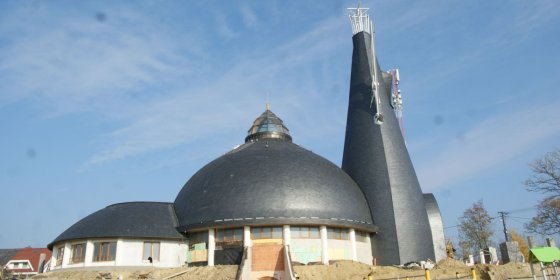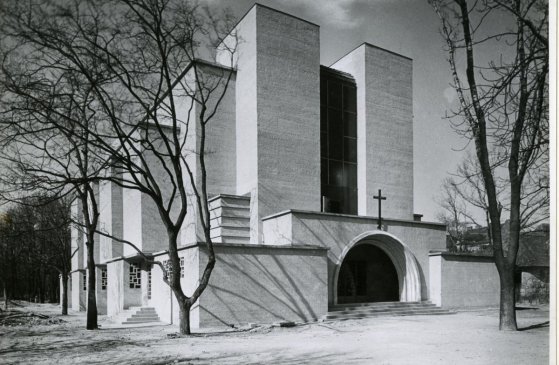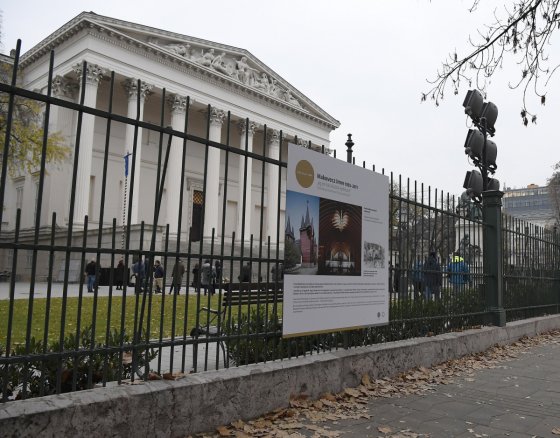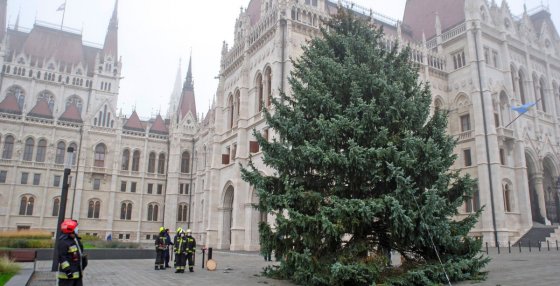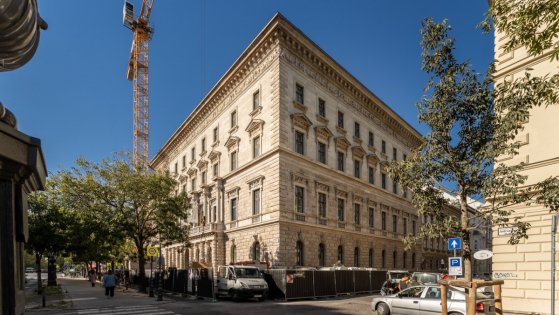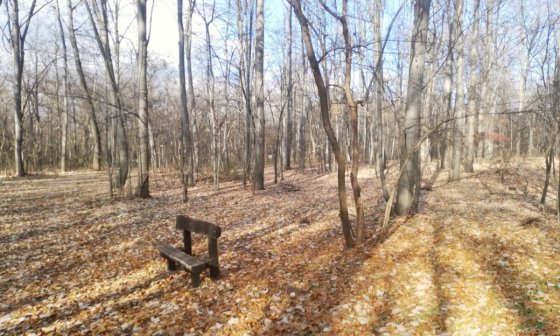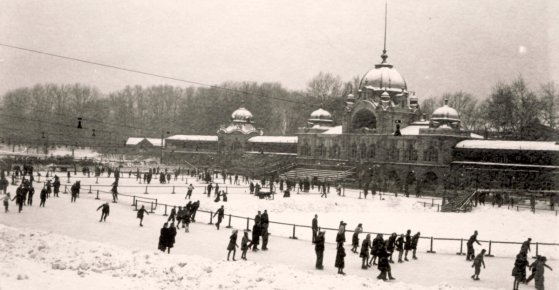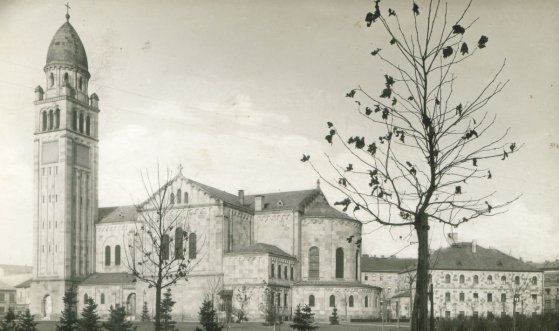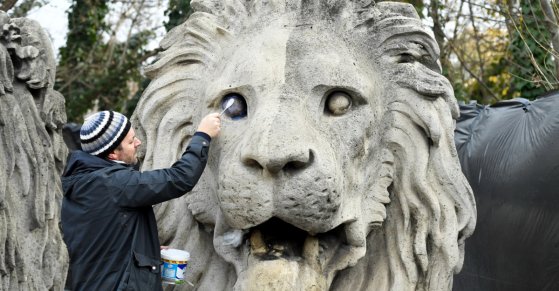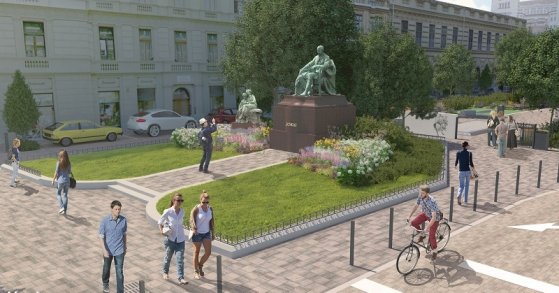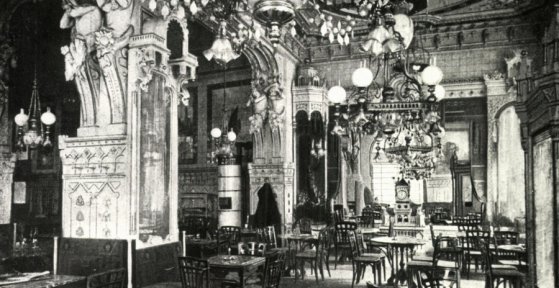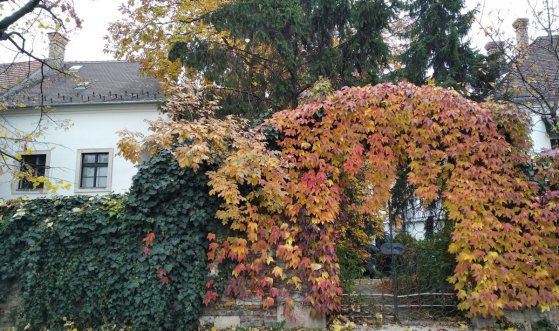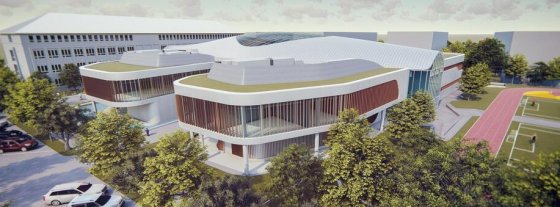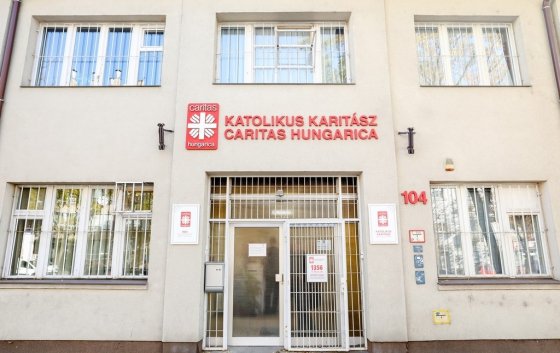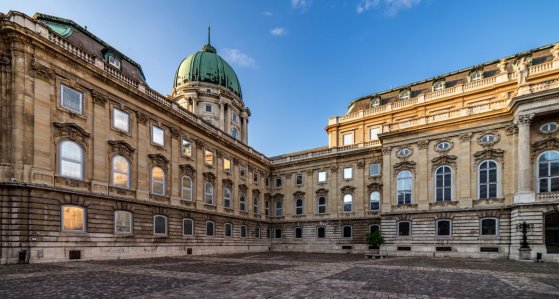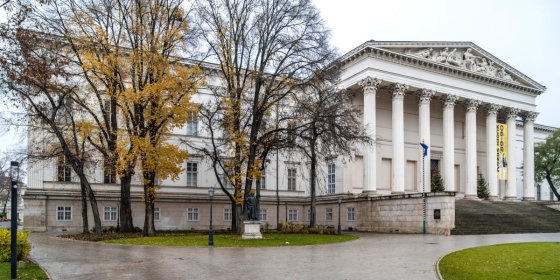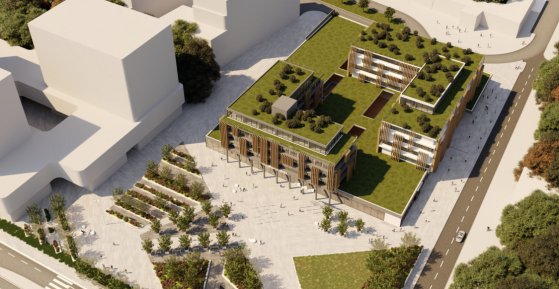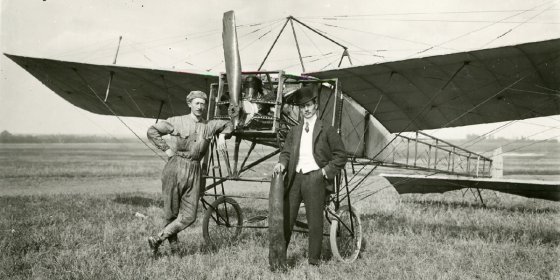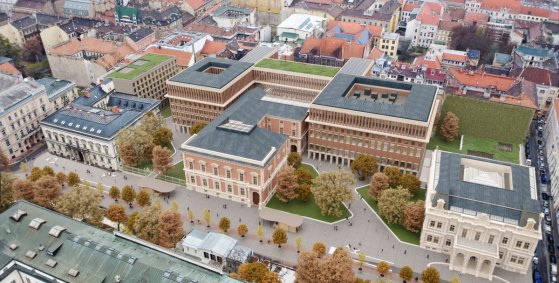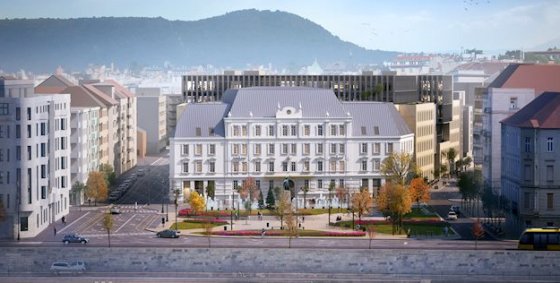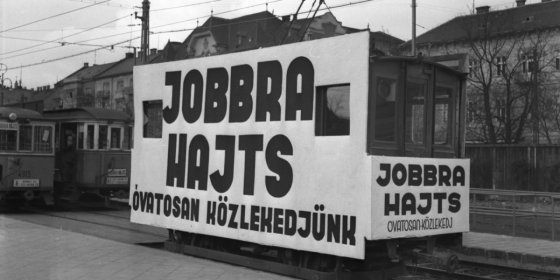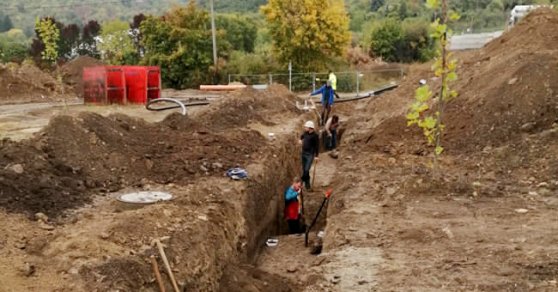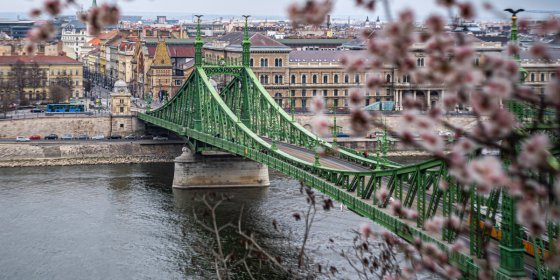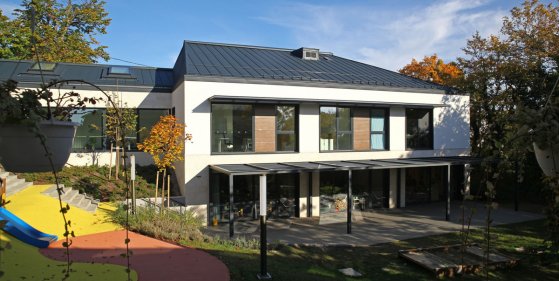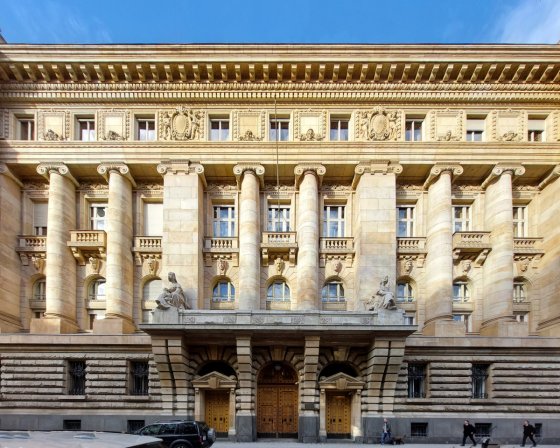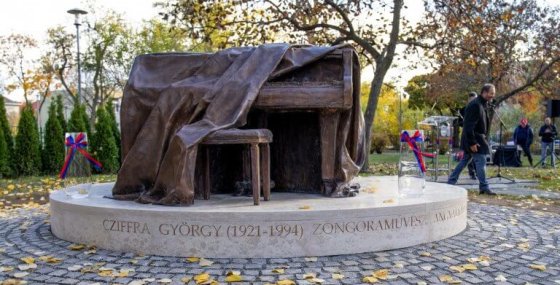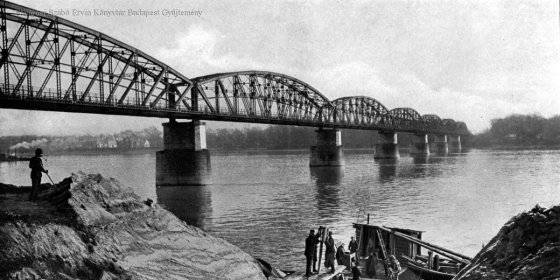 The „intertwined history” of the bridges and the city of Budapest
Which ideas and events have shaped the fate of bridges of Budapest and the cityscape? Alongside many other interesting facts, this question is also answered this newly published book by the Budapest City Archives, which introduces the history of bridges in Budapest.
The „intertwined history” of the bridges and the city of Budapest
Which ideas and events have shaped the fate of bridges of Budapest and the cityscape? Alongside many other interesting facts, this question is also answered this newly published book by the Budapest City Archives, which introduces the history of bridges in Budapest.
PestBuda
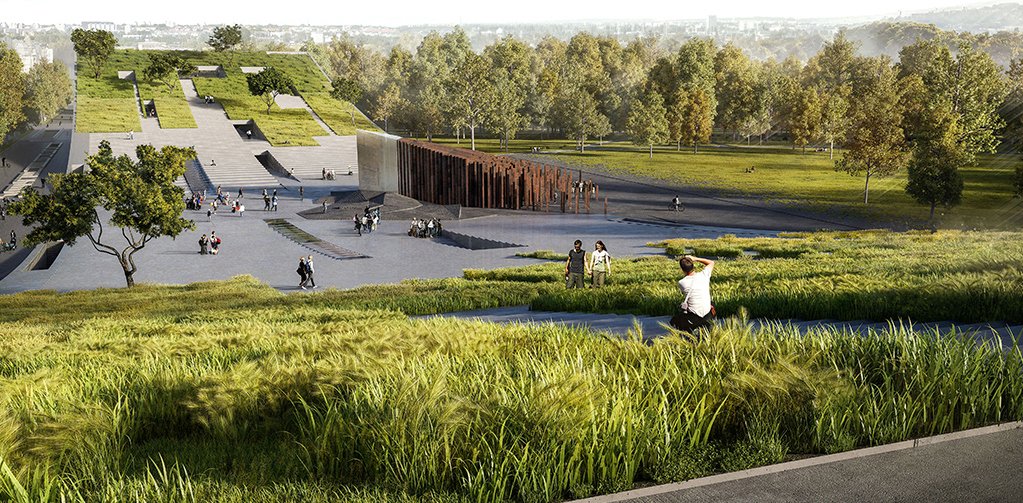 The Ethnographic Museum, which will open in the spring of 2022, will be a meeting place
The Ethnographic Museum, which will open in the spring of 2022, will be a meeting place
November 24, 2021 at 6:30 PM
150 years after its founding, the Ethnographic Museum will now operate for the first time in a new space built for its own purposes, which will be a real meeting place in the future, the institution said in a press conference yesterday.
The Makovecz Church, on the foundation stone laying of which the architect was present, will soon be completed
November 24, 2021 at 9:00 AM
Imre Makovecz, a master of organic architecture, designed many churches in addition to many buildings. The plans for the Church of the Ascension in Rákoskert were made between 2008 and 2009, for which the necessary financial resources were not available at that time. However, construction of the church began two years ago and is now nearing completion. The new bell has been placed in its tower these days.
Bertalan Árkay, who died fifty years ago, was a master of modern architecture
November 23, 2021 at 5:00 PM
Bertalan Árkay was undoubtedly one of the excellences of modern Hungarian architecture. He made one of his most emblematic works, the Városmajor Heart of Jesus Parish Church, with his father, Aladár Árkay, but he also made his mark in modern villa architecture between the two world wars.
The Hungarian National Museum pays tribute to Imre Makovecz with an exhibition
November 23, 2021 at 2:00 PM
The Hungarian National Museum commemorates the 10th anniversary of the death of Imre Makovecz, an iconic figure in Hungarian organic architecture, with a photo exhibition.
The country’s Christmas tree was erected in front of the Parliament
November 22, 2021 at 7:00 PM
The 18-meter-high silver pine adorns Kossuth Square from Advent to the day of the Epiphany.
The renovation of the Haggenmacher Palace on Andrássy Avenue is nearing completion
November 22, 2021 at 5:30 PM
Architect Henrik Schmahl's early masterpiece, the mansion at Andrássy Avenue 52, will soon regain its former beauty. Currently, the historical facade, corridors and loggias are being restored.
The Páskomliget and its surroundings: a green area on the border of Budapest worthy of a better fate
November 21, 2021 at 4:00 PM
This part of the 15th District has been the area of semi-floodplain forests dormant in the intermittent cover of the surrounding watercourses for centuries. Then came agricultural utilisation and turned the balance upside down: drainage, ploughing, deforestation ensued, and then came the construction of housing estates in the 20th century. However, we would not be in today's Budapest if local communities did not try to save their environment from urbanisation.
There has been artificial ice on the City Park Ice Rink for 95 years
November 20, 2021 at 5:00 PM
95 years ago today, on 20 November 1926, the mechanically cooled skating rink in City Park was handed over. Thanks to the artificial ice, the season has been extended, allowing ice skating even when the temperature does not drop below zero degrees. The one in City Park was the first artificial ice surface in the country and the second in Europe.
The Church of Saint Vincent de Paul in Ferencváros was consecrated 85 years ago
November 20, 2021 at 11:00 AM
A fine example of historicist architecture is the Church of Saint Vincent de Paul at the intersection of Mester Street and Haller Street in Ferencváros, which was consecrated in 1936, 85 years ago. Its creator was Gáspár Fábián, who, as one of the most outstanding architects of his time, designed about fifty church buildings. The carved sandstone building, modelled on Romanesque churches in northern Italy, can accommodate up to 2,000 people. From the top of the 55-metre tower, an amazing panorama is a delight for those climbing the staircase.
The stone lions of the Lánchíd are being restored
November 19, 2021 at 4:00 PM
pestbuda , pestbuda.hu , Budapest , Chain Bridge , Stone Lion , News
Jókai Square is being reborn as a space of Hungarian literature
November 18, 2021 at 2:30 PM
Hidden on the side of Andrássy út. in the Jókai square of the 6th district, after the renovation, the green area will be significantly larger and the number of parking spaces will be reduced. Work, which began in October, is expected to be completed in the second half of 2022.
At the turn of the century, Balaton Café was the center of social life, today it is for university students
November 18, 2021 at 11:30 AM
One of the exclusive cafés at the turn of the century was the Balaton Café [Kávéház in Hungarian], opened in 1894 on the corner of Rákóczi Road and Szentkirályi Street. The owner set himself no less a goal than to compete with the New York Café that opened at the same time. The café became the haunt of well-known politicians, famous actors, renowned writers, but its lavish interiors can unfortunately only be known from photographs today. Recently, university students took possession of the Szentkirályi Street wing, but there is nothing reminiscent of the luxurious past in the newly established examination center.
A hidden little street in the Castle - the Babits Mihály Promenade is 85 years old
November 17, 2021 at 4:30 PM
Babits Mihály Promenade is one of the most romantic streets in Budapest. It runs along the castle wall of Buda, and although the tourist traffic is huge nearby, only a few are walking in this relatively hidden area. Yet it was created in the 1930s precisely because it opened up a magical panorama of the entire city, and it was hoped it would attract foreign visitors like sugar.
School with ornamental garden - Renovation of Jedlik Ányos Grammar School begins
November 17, 2021 at 1:30 PM
The main building of the Benedictine grammar school in Csepel will be completely renovated, and a modern central hall, vocational education wings, library, pavilions and an ornamental garden will be built during the investment.
The national center of Catholic Caritas was handed over on Bartók Béla Street
November 16, 2021 at 4:30 PM
The Catholic Caritas was reorganized after the change of regime, and by 1995 a nationwide network of aid organizations had been established. They are celebrating its 90th anniversary right now. The headquarters of the institution have been in an apartment on Béla Bartók Street in Újbuda since 1990, but these days the aid organization has moved into its own building.
On the birthday of Budapest, those interested can get acquainted with the history of the city in the Castle Museum
November 15, 2021 at 3:30 PM
What was Budapest like in 1873, the year of city unification? How did you decide what the coat of arms of the capital should represent? What was the embankment and the Danube like? Visitors can get acquainted with these topics at the BTM Castle Museum, on 20 November, 2021, where those interested in the history and architecture of the capital are welcome on the birthday of Budapest.
The artists' colony on Százados Road was built on the outskirts of the city 110 years ago, today it is an integral part of Józsefváros
November 15, 2021 at 1:00 PM
A special and closed world bordered by a fence where artists live and create. That's how it has been for110 years. With the support of Mayor István Bárczy, the country's first artists' colony was built on Százados Road in 1911 from the budget of the capital, with fifteen one-storey houses and 28 studios. From the beginning, renowned artists created here, including Ferenc Medgyessy, Zsigmond Kisfaludi Strobl, Bertalan Pór, Dezső Czigány. The area, which was still a suburb at the time of its handover, is now an integral part of Józsefváros.
The interiors of the Hungarian National Museum are being renovated
November 14, 2021 at 4:00 PM
Internal renovation work has begun at the Hungarian National Museum, during which the reception areas and the museum shop, as well as a café, will be renovated.
Bosnyák Square is being completely renovated, and a new city center is being built in Zugló
November 12, 2021 at 2:00 PM
A new town hall, a market and a specialist clinic will be built on Zugló's main square, and a new town district with parks, a shopping street and public spaces will be established between Bosnyák Square and the Rákos stream. The multifunctional district center is scheduled for completion in 2024.
The first Hungarian flew over Budapest 110 years ago
November 12, 2021 at 9:00 AM
One of the most colourful personalities in the heroic age of aviation was Guido Prodam. The adventurous pilot learned to fly in Rákosmező, and he was the first Hungarian to fly over the Budapest downtown 110 years ago. During his journey, he flew along the Danube, he also flew above the Chain Bridge, the Buda Castle and the Technical University.
We have the designer of the new campus of the Péter Pázmány Catholic University - Here are the visual plans
November 11, 2021 at 2:30 PM
The results of the design competition were announced, which were won by Közti Zrt. And Hamburg C Kft. Thus, according to his ideas, the new building complex of the Pázmány Péter Catholic University can be built behind the National Museum in the spring of 2026, in the area bordered by Pollack Mihály Square, Szentkirályi Street, Múzeum Street and Bródy Sándor Street, in the 8th district.
A hotel will open in 2024 on the site of the Radetzky Barracks
November 10, 2021 at 2:00 PM
A 127-room hotel will open in the former Radetzky Barracks on Bem Square, expected in 2024. The historical 19th century building was almost completely demolished last year, leaving only the main façade overlooking the square.
Right-hand traffic was introduced in Hungary 80 years ago
November 10, 2021 at 9:00 AM
In much of the world today, cars are on the right side of the road, and on the European mainland, this is the traffic regulation, wherever we go. However, this was not always the case: the right-hand drive in Hungary only became common 80 years ago, in November 1941, as one of the last countries on the European continent. However, several transport vehicle still operated according to the original order, the change in the Kisföldalatti [the small underground railway] only took place in 1973.
Traces of a seven-thousand-year-old village were found in the 11th district
November 9, 2021 at 2:30 PM
Archaeologists excavated the remains of a seven thousand years old settlement in the 11th district on Madárhegy. Fragments of mainly pottery and animal bones left behind by Stone Age people were found in the pits.
Without whom the Liberty Bridge would not be the same: Virgil Nagy, the master builder of metal, died a hundred years ago
November 8, 2021 at 6:30 PM
Virgil Nagy, who designed the structures that fundamentally define the view of Budapest, passed away 100 years ago, the architectural design of the Liberty Bridge and the aesthetic appearance of the old Elizabeth Bridg , which was blown up in 1945, are his works.
A design tender is being announced for the renewal of the Town Hall Park
November 8, 2021 at 4:00 PM
According to the plans, the area currently used for parking will be transformed into a park and opened to the people of Budapest. The renovation of the Town Hall Park may start in 2023, but it is also planned to renovate the rear facade of the Town Hall facing Károly Boulevard.
A new Catholic kindergarten was consecrated on Svábhegy
November 8, 2021 at 2:00 PM
The Pannonia Sacra Catholic Kindergarten opened its doors in September in the 12th district, the two-storey modern building was built on Diana Road.
The wedge of Szabadság Square is renewed - The Hungarian National Bank regains its original splendour
November 8, 2021 at 9:00 AM
The Hungarian National Bank was established in 1924, and the institution's well-known building in Szabadság Square was actually handed over in 1905 as the headquarters of the Austro-Hungarian Bank in Budapest. The economic flourishing of the period of dualism is also reflected in the prestigious building designed by Ignác Alpár, which will hopefully be brought to the fore by the reconstruction that will begin soon. During the renovation of the monument, the original conditions will be restored in the interior and the whole building will be modernised and made energy-efficient.
A statue was inaugurated in memory of György Cziffra in the 13th district
November 7, 2021 at 3:00 PM
On the 100th anniversary of György Cziffra's birth, a statue was unveiled in memory of the piano virtuoso in the park named after him.
A forgotten enormous railway bridge - Built for the Millennium, destroyed by war
November 7, 2021 at 10:30 AM
The Újpest Railway Bridge is a stepchild among the bridges in Budapest because it does not even have a regular name. There is almost no mention of it, even though trains have been running here for 125 years, and it plays an important role in traffic around Budapest. Pestbuda now remembers the birth of the first structure, which was built in 1896 for the millennium but was destroyed in World War II.
More articles
 The „intertwined history” of the bridges and the city of Budapest
Which ideas and events have shaped the fate of bridges of Budapest and the cityscape? Alongside many other interesting facts, this question is also answered this newly published book by the Budapest City Archives, which introduces the history of bridges in Budapest.
The „intertwined history” of the bridges and the city of Budapest
Which ideas and events have shaped the fate of bridges of Budapest and the cityscape? Alongside many other interesting facts, this question is also answered this newly published book by the Budapest City Archives, which introduces the history of bridges in Budapest.
 The Bridge Report, which brought a turning point in the history of Budapest
A travel report that changed the history of Pest and Buda, as well as Hungary. The little book contributed to the change of half a thousand years of legal customs and the implementation of an investment of unprecedented size and technical quality. This book was The Bridge Report [Hídjelentés in Hungarian].
The Bridge Report, which brought a turning point in the history of Budapest
A travel report that changed the history of Pest and Buda, as well as Hungary. The little book contributed to the change of half a thousand years of legal customs and the implementation of an investment of unprecedented size and technical quality. This book was The Bridge Report [Hídjelentés in Hungarian].
 Drama on the university wall - The heroic monument was planned 95 years ago
In the constant hustle and bustle of the Egyetem Square in Pest, the students may not even notice the monument that decorates the short section of wall between the church and the central building of ELTE. However, it commemorates their predecessors, the heroes who fought for their country in World War I, and those who heroically helped them. The first design of the dramatically collapsing soldier was born in 1928, ninety-five years ago.
Drama on the university wall - The heroic monument was planned 95 years ago
In the constant hustle and bustle of the Egyetem Square in Pest, the students may not even notice the monument that decorates the short section of wall between the church and the central building of ELTE. However, it commemorates their predecessors, the heroes who fought for their country in World War I, and those who heroically helped them. The first design of the dramatically collapsing soldier was born in 1928, ninety-five years ago.

